#paul stohrer
Text

Town Hall (1953-56) in Stuttgart, Germany, by Hans Paul Schmohl & Paul Stohrer
#1950s#town hall#concrete#architecture#germany#nachkriegsarchitektur#nachkriegsmoderne#architektur#stuttgart#hans paul schmohl#paul stohrer
60 notes
·
View notes
Text

.
Thursday Throw Back… way way back - The Oldest…Bakery in Paris.
This pastry shop “Patisserie Stohrer” in the center of Paris bears the name of its founder Nicolas Stohrer, pastry chef to King Louis XV. Founded in 1730, it is considered the oldest pastry shop in the capital, people come here to taste appetizing sweet and savory creations, but also to admire its sumptuous decor, listed as a historical monument.
The interior of the shop is designed by Paul Baudry a French painter who lived in Paris during the 19th-century. Other famous places decorated by the artist include Opera Garnier and Musée d’Orsay.
Nicolas Stohrer, Franco-Polish pastry chef, is the inventor of rum baba. A dessert whose name derived from the Polish word baba – grandmother in the language of children.
6 notes
·
View notes
Photo
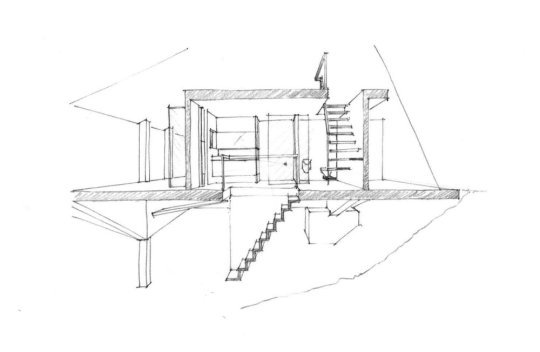
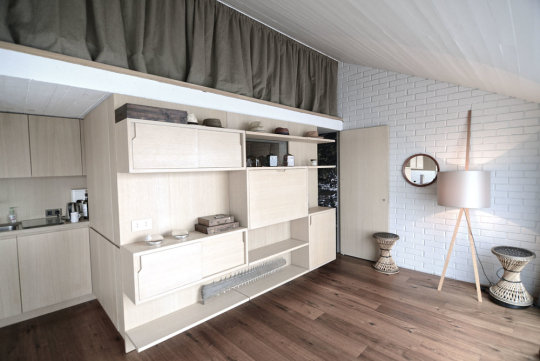


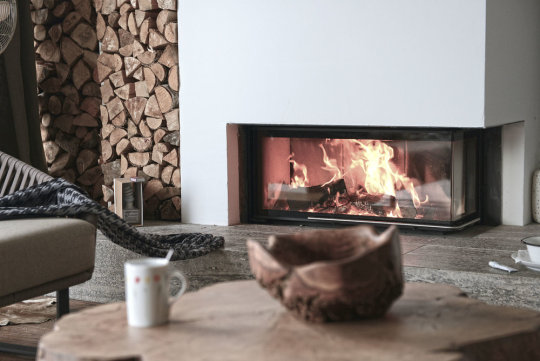
Paul Stohrer, Ferienhaus “Moroshito”, Bodensee, 1961
(Ruppenstein/Liganova, Revitalisierung, 2009)
2 notes
·
View notes
Text
Become Architectuul’s Next FOMA Curator!
Architectuul invites individuals, institutions, organizations and universities to collect and document Forgotten Masterpieces (FOMA). If you are interested in participating to our monthly curatorial campaign don’t be shy!
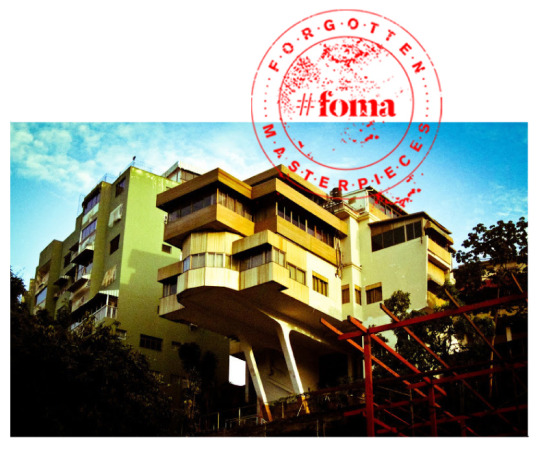
Share your own FOMA to the Architectuul’s Facebook, Instagram or Twitter with #foma or send your proposals to [email protected] and become Architectuul’s next Forgotten Masterpieces curator!
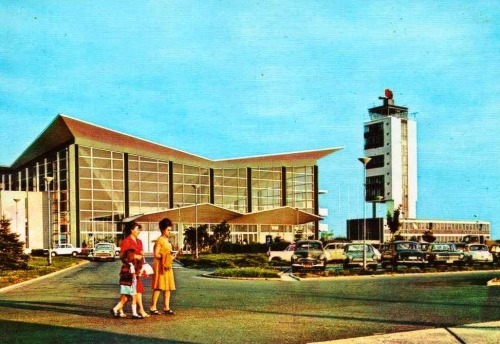
Belgrade Airport by Atelier LIK after the opening (1962). | Photo via exyuaviation

Dosan Canning Factory by Aydın Boysan in Yenisehir. | Photo Reha Günay
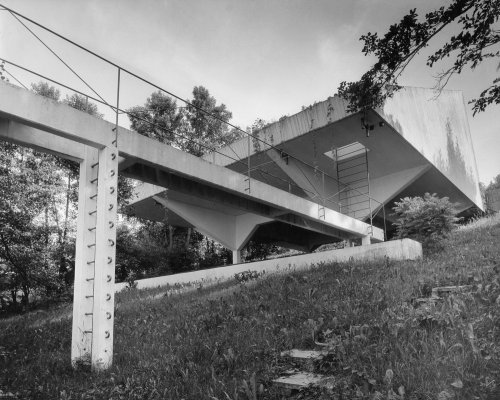
Moroshito summer house by Paul Stohrer. | Photo via Ruppenstein

The O’Donnell 34 office by Antonio Lamela. | Photo © Carlos Traspaderne
70 notes
·
View notes
Text
Tags - Architects/designers I-Z
I.M. Pei
Ignaty Milinis
Ignazio Gardella
Igor Vasilevsky
Ilia Golosov
Isamu Noguchi
Ivan Fomin
Ivan Leonidov
Ivor Smith and Jack Lynn
J.B. Hourlier
J.B. Ingwersen
J.F. Staal
J.J.P. Oud
L.J. sert
J.M. Lamuniere
J.M. Stokla
James Gowan
James Stirling
Jan Duiker
Jan Wils
Jean Bourgon
Jean Dubuisson
Jean Prouve
Jean Renaudie
Joao Filgueiras Lima
Joaquim Guedes
Johann Georg Gsteu
John Andrews
John Bancroft
John Dinkeloo
John Hejduk
John M. Johansen
John Madin
John Pawson
John Portman
John Storrs
Jorn Utzon
Jos Bedaux
Josef Schulz
Joseph Salerno
Jozsef Fischer
Juan O'Gorman
Juliaan Lampens
Jurgen Sawade
Justus Dahinden
K.L. Sijmons
Kalff
Karl Ehn
Karl Moser
Karl Schwanzer
Kenzo Tange
Kevin Roche
Kisho Kurokawa
Kiyonori Kikutake
Konrad Wachsmann
Konstantin Melnikov
Kunio Mayekawa
Kurt Schlauss
Kurt Schwitters
Le Corbusier
Lebbeus Woods
Leonardo Savioli
Leonid Vesnin
Leslie Martin
Lev Rudnev
Lina Bo Bardi
Louis Fumet
Louis Kahn
Louis Noiray
Louis Sullivan
Lucio Costa
Ludwig Hilberseimer
Luigi Figini
Luigi Moretti
Luis Barragan
Luis Peña Ganchegui
Lutyens
Malevich
Manfred Hermer
Marcel Breuer
Marcel Lods
Marcello Piacentini
Mario Pani
Marius Duintjer
Mart Stam
Martin Elsaesser
Martin van Treeck
Max Abramovitz
Max Berg
Mendelsohn
Michel de Klerk
Mies
Minoru Yamasaki
Moholy-Nagy
Moisei Ginzburg
Moshe Safdie
MVRDV
Neave Brown
Neutra
Nicholas Grimshaw
Nikolai Kolli
Noi Trotsky
O Studio
Olivier-Clement Cacoub
Olson Kundig
OMA
Oscar Niemeyer
Oswald Ungers
Otto Herbert Hajek
Ove Arup
Owen luder
P.V. Jensen Klint
Pancho Guedes
Panteleimon Golosov
Paolo Portoghesi
Paolo Soleri
Paul Baumgarten
Paul Ludwig Troost
Paul Nelson
Paul Rudolph
Paul Stohrer
Paul Virilio
Paulo Mendes Da Rocha
Pei Cobb Freed
Peter Behrens
Peter Eisenman
Peter Märkli
Peter Zumthor
Philip Johnson
Pier Luigi Nervi
Pierre Jeanneret
Pierre Koenig
Pierre Parat
Piet Blom
Piet Elling
Piet Mondriaan
Piet Zanstra
Pietro Belluschi
Pietro Lingeri
Pot Keegstra
R.M. della Rocca
Raimund Abraham
Rainer Disse
Raj Rewal
Ralph Erskine
Ray Eames
Reinhard Gieselmann
Rem Koolhaas
Renaat Braem
Rene Gages
Renzo Piano
Ricardo Bofill
Ricardo Legorreta
Richard Meier
Richard Rogers
Richard Seifert
Richard Sheppard
Robert Geddes
Robert Mallet-Stevens
Robert van ’t Hoff
Robert Venturi
Roger Anger
Rudolf Schwarz
Rudolf Steiner
Ruy Ohtake
Sachio Otani
Sant'Elia
Sérgio Bernardes
Sergio Musmeci
Shoji Sadao
Sigurd Lewerentz
Simon Ungers
Smithsons
SOM
Speer
Stanley Tigerman
Superstudio
Sverre Fehn
Tadao Ando
Team X
Terragni
Theo Bosch
Theo van Doesburg
Tony Garnier
Ulrich Franzen
Val Michelson
Valerio Olgiati
Van den Broek en Bakema
Vann Molyvann
Vico Magistretti
Victor Bodiansky
Viktor Vesnin
Vilanova Artigas
Viljo Revell
Vittoriano Vigano
Vladimir Bodiansky
Vladimir Shukhov
Vladimir Tatlin
Volker Theissen
Wallace Harrison
Walter Forderer
Walter Gropius
Walter Netsch
Wang Shu
Wassili Luckhardt
Wells Coates
Werner Allenbach
Werner Düttmann
Werner March
Wiel Arets
Willem Dudok
Willem van Tijen
William Pereira
Willy Guhl
Willy Kreuer
Willy Van Der Meeren
Wim Quist
Yakov Chernikov
Yoshinobu Ashihara
Zvi Hecker
191 notes
·
View notes
Photo
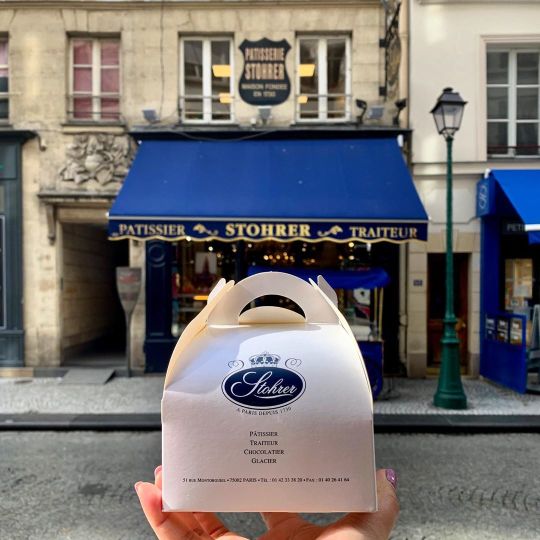
PATISSERIE•STOHRER • L'histoire de Paris • In 1725, on the occasion of her marriage to Louis XV, Marie Leczynska - daughter of King Stanislas I of Poland, taking her father's pastry chef, Monsieur Stohrer, to the courtyard that accompanied him. Five years later, in 1730, he moved to rue Montorgueil, and opened a pastry shop whose specialties were going to be the 'babas' and the 'puits d'amour'. • The legend also attributed to this pastry chef the elevation of the Baba au Rhum of iconic French desserts. It is said that when King Stanislas I settled in his exile in Luneville near Nancy in the Lorraine, he found the local Gugelhupf cake to be too dry. A dry cake and the troubles that a monarch in exile had to endure. The King’s chef kindly imbibed the cake in a syrup laced with a herbal liqueur. In its contemporary version it is often served chilled, accompanied with Chantilly cream and a medley of fresh red berries. • Today the shop is on one hand a national treasure, and on the other hand a tourist destination, it has extended into traiteur and event catering but it remains, essentially, a delightful pâtisserie shop which vision is to focus on longevity, paying particular attention to maintaining quality combined with great taste to go from generation to generation rather than world cake domination. • @stohrer shop itself is snug and can accommodate three maybe four at a squeeze. The staff are used to people taking their time before to order, as the eyes contemplating from chandeliers, through glass counters and murals painted by Paul Baudry (1828-1886) around 1864, who had just achieved fame by the decorations made at the Galliera hotel and the frescos in the Opera Garnier. The building, from the end of the 18th century, has a curious bas-relief surmounting the portal: a terrestrial globe surrounded by attributes of the Arts and Letters. • Double tap if you like french patisserie • • • • • #frenchpatisserie #pastry #patisserie #frenchbakery #bestdessert #parisianvibes #pastryelite #travelandfood #tastemadetravel #visitparis #frenchfoodporn #thefoodnetwork #eatwithme #gallivantingpalate #icheckfood #ichecktravel #dublinfoodcentral (at Paris, France) https://www.instagram.com/p/B-QJQXdnorM/?igshid=rdzntxzmvhe0
#frenchpatisserie#pastry#patisserie#frenchbakery#bestdessert#parisianvibes#pastryelite#travelandfood#tastemadetravel#visitparis#frenchfoodporn#thefoodnetwork#eatwithme#gallivantingpalate#icheckfood#ichecktravel#dublinfoodcentral
1 note
·
View note
Text
Where to Eat in Paris
Where to Eat in Paris – a comprehensive Paris travel guide with our most memorable bites, pastry shops, and restaurant recommendations. For a custom, navigational Google map containing all of these spots and more, click here.
Back in May, Connor and I spent three glorious, food-filled days in Paris, France. It always takes me a while to sift through the photos and put these guides together, but today I’m (finally!) sharing our best bites and recommendations!
Since Connor has a very intense work schedule, we strive to plan at least one big trip together every year. Travel is one of our greatest passions, so in lieu of anniversary, birthday, or holiday gifts, we go places.
On a side note, Connor has become a pro at accumulating free airline miles, which helps make this possible! If you ever want a post about this, please let me know in the comment section and we’ll share our tricks.
Paris has been at the top of my travel bucket list ever since I graduated from French culinary school five years ago. My first trip to France was over 20 years ago, and let’s just say, my palate has improved dramatically since those days.
For this trip, we spent the first five nights in the sleepy village towns of Provence (which I’ll share more about in a separate post!) and then headed to Paris for the final leg of the trip.
We stayed in a studio apartment airbnb in the popular Marais district for the entirety of our trip, and it was a great home base for exploring the city on foot. It also happens to be home to many excellent restaurants and pastry shops.
Our time in Paris was food-filled to say the least. We practically ate our way through the city. Thankfully we walked everywhere, which helped make up for some of it. I always like to do a fair amount of research leading up to any trip, and this one was pretty extensive.
I’m almost embarrassed to admit how many pastry, chocolate, and food establishments were flagged on our custom Google map – but it payed off.
Access a free, navigational ‘Best Bites Paris Edition’ Google map by clicking here. It includes more places than shared in this post (including ones that we didn’t have a chance to visit), but is a wonderful starting point.
For more resources on where to eat and what to do in Paris, see the bottom of this post.
While this list isn’t exhaustive by any means, I highly recommend visiting at least one or more of these spots if you are planning a trip to Paris anytime soon.
Pastry Shops and Bakeries:
Travel Tip: I highly recommend making your way to most of these pastry shops by 10 am at the latest in order to snag the freshest pastries. Your efforts will be rewarded!
Stohrer – (51, rue Montorgueil, 2nd) – one of the oldest bakeries in Paris (established in 1730), Stohrer is worth a visit even if it’s just to poke your head in the door to oggle at the beautiful interior and impeccable pastries. While their baba au rhum is famous, Connor and I indulged in a fresh-out-of-the-oven kouign-amann and it was one of the best bites of our entire trip. Earth shatteringly flaky. One of the best pastries I’ve ever had. You really can’t go wrong with anything here.
Du Pain Et Des Idees – (34, rue Yves Toudic, 10th) – another incredibly beautiful, famous Parisian bakery (established in 1889) that is known for their homemade breads (particularly their pain de amis, cereal bread), croissants, and pistachio escargot pastries. I highly recommend visiting this spot early in the morning as the pastries will be freshest at this time. We had better pastries elsewhere, but I’m glad we visited. The interior is tiny, but stunningly beautiful and classic. It also happens to be within blocks of Holybelly Cafe, one of our favorite breakfast spots in the city.
Pain Pain – (88 rue des Martyrs, Montmartre) this bakery shop was an unexpected discovery as we walked back from Sacré-Coeur (one of the reasons why walking everywhere pays off!). Unlike many of the other bakeries in this guide, Pain Pain has only been open since 2012, but since that time has won the prestigious Grand Prix de la Baguette award twice. If you’re making your way over to Montmartre, I definitely recommend popping in for a quick visit. I wish I had tried some of the beautiful pastries in this shop, but we did enjoy a delicious slice of quiche lorraine and cornichon saucisson sandwich for lunch.
Maison Aleph – (20 Rue de la Verrerie, Marais) – this unique pastry shop, which specializes in bite-sized Middle Eastern inspired pastries, was one of the most memorable stops in Paris. Most of the pastries in this shop are made from crisp kataifi (shredded phyllo dough) and are filled with a variety of fillings from fresh mango (the purest mango flavor ever!) to cardamom lemon curd, strawberry orange blossom, rhubarb almond, and everything in between. They’re then topped with various flavors of normandy cream. Incredibly delicious and unlike any other pastries we had! I loved the smaller size of these pastries, because it allowed us to get a variety of flavors. Highly, highly recommend.
Pierre Herme (72 Rue Bonaparte, 6th) – a classic not to be missed, Pierre Herme is unequivocally thought to be home to the best and most creative macarons in the city. As someone who has never been obsessed with macarons, I can fully declare that these were incredible and worth the price tag/visit. I highly recommend picking up a box in order to try a variety of flavors (they come in odd numbers). You could even time your visit so that you could bring a box home with you.
We tried everything from their signature rose, lychee, raspberry (excellent) to jasmine wild strawberry, passion fruit milk chocolate (so good), hazelnut asparagus (we couldn’t detect the asparagus, but it was delicious) to fresh mint (one of my unexpected favorites). In hindsight, I wish we had tried some of their other beautiful pastries as well, since they are considered some of the best in the city!
L’Eclair de Genie (14 rue Pavee, Marais) – this modern bakery is famous for its stunningly beautiful eclairs. We ended up meeting our friends Lindsay and Taylor – who also happened to be traveling in France at the same time as us – here for a quick afternoon pasty snack one afternoon. We shared three eclairs amongst all of us, which was the maximum that I could handle at that point in the trip. While I preferred the pastries above more, this spot is worth a visit if you’re in the mood for impeccable, beautifully decorated eclairs.
Jacque Genin – (133 Rue de Turenne, Marais) – the beautiful caramels, chocolates, pate de fruit, and other candies at this famous chocolatier are displayed like fine jewelry. It is worth stepping into this shop just to appreciate how seriously the French take their cuisine, particularly pastries and chocolate. While we didn’t end up purchasing any of the chocolates from this store (be prepared for high prices), I really wish we had brought a few home with us to try! The caramels are particularly famous.
Berthillon – (29-31 Rue Saint-Louis en l’Île, Ile Saint Louis) – this gelato shop is one of the most famous in the city and rightfully so. While many restaurants and shops sell Berthillon gelato, I highly recommend visiting the actual gelato shop on Ile Saint Louis. Not only is it fairly centrally located in the city (particularly if you are visiting famous sights such as Notre Dame or Sainte-Chapelle) but the island is worth a visit for the beautiful views and casual stroll. The gelato was some of the best that we’ve ever had! Try to time your visit at an off-hour in order to avoid long lines.
Casual Food and Breakfast Spots:
L’as Du Fallafel – (32-34 Rue des Rosiers, Marais) – this famous falafel shop in the Marais District is often teeming with lines. Our Airbnb apartment was located within just 100 feet of this spot, so we did make time to grab one of their famous falafel sandwiches topped with spicy sauce. While the price tag was unbeatable and the falafel was very good (and extremely generous in serving), we felt it was slightly overrated for the hype. However, it’s definitely worth a visit if you are in need of a quick lunch, can avoid the lines, or are already in the area!
Frenchie To Go – (9 Rue du Ni, 2nd) – This casual breakfast and lunch spot, founded by one of Paris’s most popular chefs, is located in a quiet, nondescript alley in the 2nd arrondissement. I received a recommendation for this spot from a friend, and we shared a great breakfast of eggs Benedict with spinach and a delicious homemade granola yogurt bowl. Be sure to spend a few minutes exploring the fish market, speciality food market, and other Frenchie restaurants and shops on the street while you’re in the area.
Holybelly Cafe – (5 Rue Lucien Sampaix, 10th) – our favorite breakfast (and one of our favorite meals) in Paris! This trendy, Instagrammable cafe is known for it’s excellent American-style pancakes (some of the best that I’ve had!) and egg dishes. The coffee was also some of the best that we had in the city (sadly, most of the coffee we had in France was horrible). I highly, highly recommend taking time to visit this spot while you’re in the city. The food is great and the atmosphere is wonderful.
Restaurants and Bistros:
Travel Tip: We chose more casual, bistro-style restaurants for our dinners in Paris (in lieu of expensive, multi-course Michelin-star spots!) during this trip, but I’ve included helpful resources at the bottom of this post with additional recommendations if you are looking for additional ideas. As a general tip, remember that it is easier to snag reservations at slightly earlier dining times (6:30-8:00 pm) in Paris than later in the evening (8:30 pm and onwards), as eating fairly late is common in France.
Bistrot Paul Bert – (22 Rue Paul Bert, 11th) – the best meal that we had in Paris. Bistrot Paul Bert is considered one of the best bistros in the city, and in our opinion, lived up to all of its expectations and then some. The general menu changes daily, but they always offer their famous steak au poivre (peppercorn steak). All of the dishes that we had here were excellent (their seafood is incredibly fresh too), but the steak was incredible. It lived up to the hype and it was literally one of the best things that I’ve ever tasted. The atmosphere, service, and ambiance is lovely too. Since this spot is fairly popular, I highly recommend booking a reservation a week or two in advance of your visit (you cannot do this online, so be sure to call!).
Breizh Cafe – (109 Rue Vieille du Temple, Marais) – it is worth noting that this casual restaurant (which has several locations!) actually started in Tokyo, Japan. Although the atmosphere isn’t overly memorable, this eatery is famous for it’s savory and sweet buckwheat crepes. We enjoyed a low-key casual diner here one night and really enjoyed it. The crepes were excellent and were offered with a large variety of fillings (below: classic Parisian combination of smoked herring, potatoes, creme fraiche, and herring caviar) to choose from. Definitely worth a visit for lunch or dinner if you are looking for a casual dining option. Reservations are recommended and can be made in advance online.
Au Passage – (1bis Passage Saint-Sébastien, 3rd) – this unique restaurant, which was started by a Texan chef, is known for it’s creative, seasonal small plates. The atmosphere is lively, fairly casual, and friendly, and the dishes are artfully presented and reasonable in price. The menu is constantly changing, which makes this a really fun spot to visit if you’re looking to mix up your dinners! It was a nice change of pace from our more traditional bistro style meals. Reservations are recommended and can be made online on their website.
Bistroy Les Papilles – (30 Rue Gay-Lussac, Latin Quarter) – a well-regarded classic bistro in Paris, which offers a very reasonable (31 euros) pre-fixe 4-course menu (which changes daily) featuring generously portioned family-style French cuisine in an intimate, cozy setting. While this spot might not be best if you prefer having a choice of dishes, we enjoyed our meal here. Be prepared to buy a bottle of wine from their generous selection on sale or bring your own (expect a corkage fee). Reservations recommended and can be made online on their website.
Specialty Food Shops and Stores:
E.Dehillerin – this famous cookware shop is known for its large selection of copper cookware. The atmosphere is classic and old school (be prepared to look up prices of items by code in a large binder). You’ll find almost every pastry mold and tool that you can imagine too. Tip: if you do make a large purchase, the shop provides a very easy-to-use refund tax form to scan at the airport on your way home.
Libraire Gourmande – if you’re looking for French cookbooks, magazines, or food-related publications, this bookstore is a fun place to pop into!
Shakespeare and Company – this unique, squirky bookstore is home to a huge selection of English publications. If you happen to be in the area, I recommend peeking into this store just for a few minutes! Just remember that no photographs are allowed.
Other Favorites:
Saint-Chapelle – if you can visit only one church or basilica during your time in Paris, I would pick Saint-Chapelle over every other option! It is stunningly beautiful on the inside – pictures can’t do it justice – and well worth the admission price (which has an added bonus of keeping away some tourists). Be sure to pick a clear sunny day in order to see the stained glass at it’s most beautiful!
Additional Resources:
For a custom Google map (containing all of the places listed above, and more!), click here.

Source: https://www.abeautifulplate.com/where-to-eat-in-paris/
0 notes
Text
Where to Eat in Paris
Where to Eat in Paris – a comprehensive Paris travel guide with our most memorable bites, pastry shops, and restaurant recommendations. For a custom, navigational Google map containing all of these spots and more, click here.
Back in May, Connor and I spent three glorious, food-filled days in Paris, France. It always takes me a while to sift through the photos and put these guides together, but today I’m (finally!) sharing our best bites and recommendations!
Since Connor has a very intense work schedule, we strive to plan at least one big trip together every year. Travel is one of our greatest passions, so in lieu of anniversary, birthday, or holiday gifts, we go places.
On a side note, Connor has become a pro at accumulating free airline miles, which helps make this possible! If you ever want a post about this, please let me know in the comment section and we’ll share our tricks.
Paris has been at the top of my travel bucket list ever since I graduated from French culinary school five years ago. My first trip to France was over 20 years ago, and let’s just say, my palate has improved dramatically since those days.
For this trip, we spent the first five nights in the sleepy village towns of Provence (which I’ll share more about in a separate post!) and then headed to Paris for the final leg of the trip.
We stayed in a studio apartment airbnb in the popular Marais district for the entirety of our trip, and it was a great home base for exploring the city on foot. It also happens to be home to many excellent restaurants and pastry shops.
Our time in Paris was food-filled to say the least. We practically ate our way through the city. Thankfully we walked everywhere, which helped make up for some of it. I always like to do a fair amount of research leading up to any trip, and this one was pretty extensive.
I’m almost embarrassed to admit how many pastry, chocolate, and food establishments were flagged on our custom Google map – but it payed off.
Access a free, navigational ‘Best Bites Paris Edition’ Google map by clicking here. It includes more places than shared in this post (including ones that we didn’t have a chance to visit), but is a wonderful starting point.
For more resources on where to eat and what to do in Paris, see the bottom of this post.
While this list isn’t exhaustive by any means, I highly recommend visiting at least one or more of these spots if you are planning a trip to Paris anytime soon.
Pastry Shops and Bakeries:
Travel Tip: I highly recommend making your way to most of these pastry shops by 10 am at the latest in order to snag the freshest pastries. Your efforts will be rewarded!
Stohrer – (51, rue Montorgueil, 2nd) – one of the oldest bakeries in Paris (established in 1730), Stohrer is worth a visit even if it’s just to poke your head in the door to oggle at the beautiful interior and impeccable pastries. While their baba au rhum is famous, Connor and I indulged in a fresh-out-of-the-oven kouign-amann and it was one of the best bites of our entire trip. Earth shatteringly flaky. One of the best pastries I’ve ever had. You really can’t go wrong with anything here.
Du Pain Et Des Idees – (34, rue Yves Toudic, 10th) – another incredibly beautiful, famous Parisian bakery (established in 1889) that is known for their homemade breads (particularly their pain de amis, cereal bread), croissants, and pistachio escargot pastries. I highly recommend visiting this spot early in the morning as the pastries will be freshest at this time. We had better pastries elsewhere, but I’m glad we visited. The interior is tiny, but stunningly beautiful and classic. It also happens to be within blocks of Holybelly Cafe, one of our favorite breakfast spots in the city.
Pain Pain – (88 rue des Martyrs, Montmartre) this bakery shop was an unexpected discovery as we walked back from Sacré-Coeur (one of the reasons why walking everywhere pays off!). Unlike many of the other bakeries in this guide, Pain Pain has only been open since 2012, but since that time has won the prestigious Grand Prix de la Baguette award twice. If you’re making your way over to Montmartre, I definitely recommend popping in for a quick visit. I wish I had tried some of the beautiful pastries in this shop, but we did enjoy a delicious slice of quiche lorraine and cornichon saucisson sandwich for lunch.
Maison Aleph��– (20 Rue de la Verrerie, Marais) – this unique pastry shop, which specializes in bite-sized Middle Eastern inspired pastries, was one of the most memorable stops in Paris. Most of the pastries in this shop are made from crisp kataifi (shredded phyllo dough) and are filled with a variety of fillings from fresh mango (the purest mango flavor ever!) to cardamom lemon curd, strawberry orange blossom, rhubarb almond, and everything in between. They’re then topped with various flavors of normandy cream. Incredibly delicious and unlike any other pastries we had! I loved the smaller size of these pastries, because it allowed us to get a variety of flavors. Highly, highly recommend.
Pierre Herme (72 Rue Bonaparte, 6th) – a classic not to be missed, Pierre Herme is unequivocally thought to be home to the best and most creative macarons in the city. As someone who has never been obsessed with macarons, I can fully declare that these were incredible and worth the price tag/visit. I highly recommend picking up a box in order to try a variety of flavors (they come in odd numbers). You could even time your visit so that you could bring a box home with you.
We tried everything from their signature rose, lychee, raspberry (excellent) to jasmine wild strawberry, passion fruit milk chocolate (so good), hazelnut asparagus (we couldn’t detect the asparagus, but it was delicious) to fresh mint (one of my unexpected favorites). In hindsight, I wish we had tried some of their other beautiful pastries as well, since they are considered some of the best in the city!
L’Eclair de Genie (14 rue Pavee, Marais) – this modern bakery is famous for its stunningly beautiful eclairs. We ended up meeting our friends Lindsay and Taylor – who also happened to be traveling in France at the same time as us – here for a quick afternoon pasty snack one afternoon. We shared three eclairs amongst all of us, which was the maximum that I could handle at that point in the trip. While I preferred the pastries above more, this spot is worth a visit if you’re in the mood for impeccable, beautifully decorated eclairs.
Jacque Genin – (133 Rue de Turenne, Marais) – the beautiful caramels, chocolates, pate de fruit, and other candies at this famous chocolatier are displayed like fine jewelry. It is worth stepping into this shop just to appreciate how seriously the French take their cuisine, particularly pastries and chocolate. While we didn’t end up purchasing any of the chocolates from this store (be prepared for high prices), I really wish we had brought a few home with us to try! The caramels are particularly famous.
Berthillon – (29-31 Rue Saint-Louis en l’Île, Ile Saint Louis) – this gelato shop is one of the most famous in the city and rightfully so. While many restaurants and shops sell Berthillon gelato, I highly recommend visiting the actual gelato shop on Ile Saint Louis. Not only is it fairly centrally located in the city (particularly if you are visiting famous sights such as Notre Dame or Sainte-Chapelle) but the island is worth a visit for the beautiful views and casual stroll. The gelato was some of the best that we’ve ever had! Try to time your visit at an off-hour in order to avoid long lines.
Casual Food and Breakfast Spots:
L’as Du Fallafel – (32-34 Rue des Rosiers, Marais) – this famous falafel shop in the Marais District is often teeming with lines. Our Airbnb apartment was located within just 100 feet of this spot, so we did make time to grab one of their famous falafel sandwiches topped with spicy sauce. While the price tag was unbeatable and the falafel was very good (and extremely generous in serving), we felt it was slightly overrated for the hype. However, it’s definitely worth a visit if you are in need of a quick lunch, can avoid the lines, or are already in the area!
Frenchie To Go – (9 Rue du Ni, 2nd) – This casual breakfast and lunch spot, founded by one of Paris’s most popular chefs, is located in a quiet, nondescript alley in the 2nd arrondissement. I received a recommendation for this spot from a friend, and we shared a great breakfast of eggs Benedict with spinach and a delicious homemade granola yogurt bowl. Be sure to spend a few minutes exploring the fish market, speciality food market, and other Frenchie restaurants and shops on the street while you’re in the area.
Holybelly Cafe – (5 Rue Lucien Sampaix, 10th) – our favorite breakfast (and one of our favorite meals) in Paris! This trendy, Instagrammable cafe is known for it’s excellent American-style pancakes (some of the best that I’ve had!) and egg dishes. The coffee was also some of the best that we had in the city (sadly, most of the coffee we had in France was horrible). I highly, highly recommend taking time to visit this spot while you’re in the city. The food is great and the atmosphere is wonderful.
Restaurants and Bistros:
Travel Tip: We chose more casual, bistro-style restaurants for our dinners in Paris (in lieu of expensive, multi-course Michelin-star spots!) during this trip, but I’ve included helpful resources at the bottom of this post with additional recommendations if you are looking for additional ideas. As a general tip, remember that it is easier to snag reservations at slightly earlier dining times (6:30-8:00 pm) in Paris than later in the evening (8:30 pm and onwards), as eating fairly late is common in France.
Bistrot Paul Bert – (22 Rue Paul Bert, 11th) – the best meal that we had in Paris. Bistrot Paul Bert is considered one of the best bistros in the city, and in our opinion, lived up to all of its expectations and then some. The general menu changes daily, but they always offer their famous steak au poivre (peppercorn steak). All of the dishes that we had here were excellent (their seafood is incredibly fresh too), but the steak was incredible. It lived up to the hype and it was literally one of the best things that I’ve ever tasted. The atmosphere, service, and ambiance is lovely too. Since this spot is fairly popular, I highly recommend booking a reservation a week or two in advance of your visit (you cannot do this online, so be sure to call!).
Breizh Cafe – (109 Rue Vieille du Temple, Marais) – it is worth noting that this casual restaurant (which has several locations!) actually started in Tokyo, Japan. Although the atmosphere isn’t overly memorable, this eatery is famous for it’s savory and sweet buckwheat crepes. We enjoyed a low-key casual diner here one night and really enjoyed it. The crepes were excellent and were offered with a large variety of fillings (below: classic Parisian combination of smoked herring, potatoes, creme fraiche, and herring caviar) to choose from. Definitely worth a visit for lunch or dinner if you are looking for a casual dining option. Reservations are recommended and can be made in advance online.
Au Passage – (1bis Passage Saint-Sébastien, 3rd) – this unique restaurant, which was started by a Texan chef, is known for it’s creative, seasonal small plates. The atmosphere is lively, fairly casual, and friendly, and the dishes are artfully presented and reasonable in price. The menu is constantly changing, which makes this a really fun spot to visit if you’re looking to mix up your dinners! It was a nice change of pace from our more traditional bistro style meals. Reservations are recommended and can be made online on their website.
Bistroy Les Papilles – (30 Rue Gay-Lussac, Latin Quarter) – a well-regarded classic bistro in Paris, which offers a very reasonable (31 euros) pre-fixe 4-course menu (which changes daily) featuring generously portioned family-style French cuisine in an intimate, cozy setting. While this spot might not be best if you prefer having a choice of dishes, we enjoyed our meal here. Be prepared to buy a bottle of wine from their generous selection on sale or bring your own (expect a corkage fee). Reservations recommended and can be made online on their website.
Specialty Food Shops and Stores:
E.Dehillerin – this famous cookware shop is known for its large selection of copper cookware. The atmosphere is classic and old school (be prepared to look up prices of items by code in a large binder). You’ll find almost every pastry mold and tool that you can imagine too. Tip: if you do make a large purchase, the shop provides a very easy-to-use refund tax form to scan at the airport on your way home.
Libraire Gourmande – if you’re looking for French cookbooks, magazines, or food-related publications, this bookstore is a fun place to pop into!
Shakespeare and Company – this unique, squirky bookstore is home to a huge selection of English publications. If you happen to be in the area, I recommend peeking into this store just for a few minutes! Just remember that no photographs are allowed.
Other Favorites:
Saint-Chapelle – if you can visit only one church or basilica during your time in Paris, I would pick Saint-Chapelle over every other option! It is stunningly beautiful on the inside – pictures can’t do it justice – and well worth the admission price (which has an added bonus of keeping away some tourists). Be sure to pick a clear sunny day in order to see the stained glass at it’s most beautiful!
Additional Resources:
For a custom Google map (containing all of the places listed above, and more!), click here.
Source: https://www.abeautifulplate.com/where-to-eat-in-paris/
0 notes
Photo
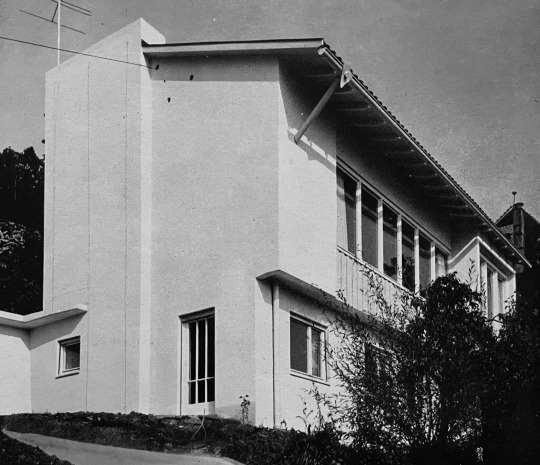
House (1948-51) at Hasenberg in Stuttgart, Germany, by Paul Stohrer
#1940s#house#architecture#germany#nachkriegsmoderne#nachkriegsarchitektur#architektur#stuttgart#paul stohrer
110 notes
·
View notes
Photo

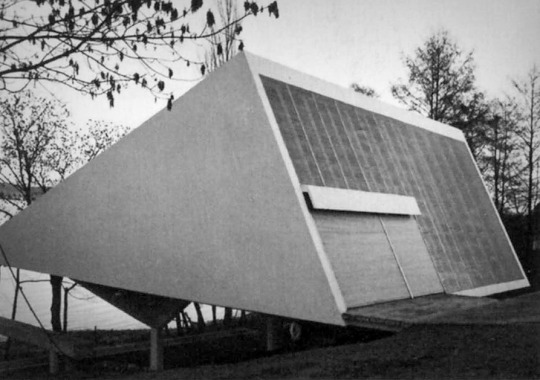

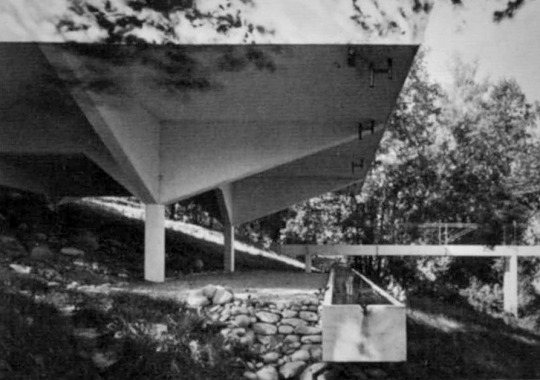
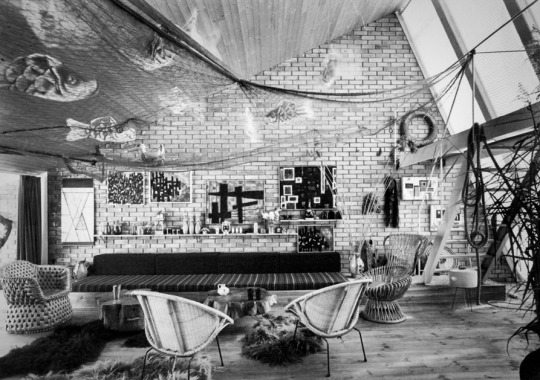



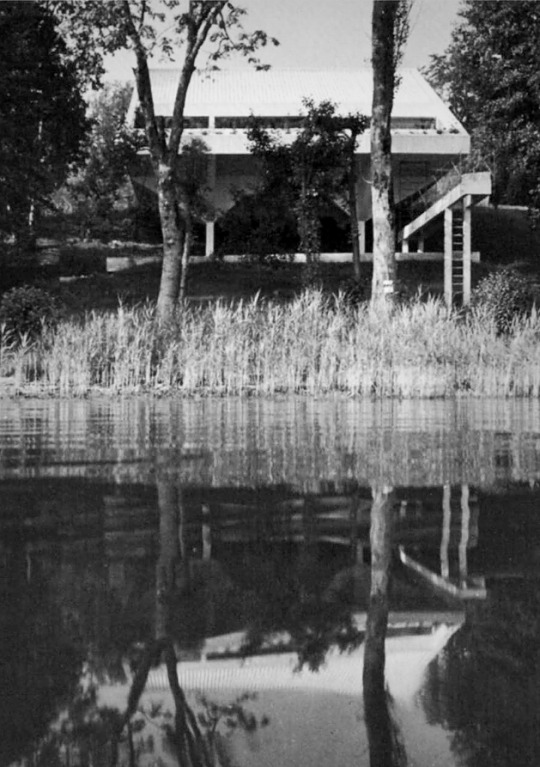
383. Paul Stohrer /// Moroshito Summer House /// Dingelsdorf, Bodensee, Germany /// 1959-61
OfHouses guest curated by AMUNT:
”The “Moroshito” summer house is located on a north-facing slope on the coast of Lake Constance. Due to the view on the lake, the street entrance and the difficult moraine* scree building ground, the house is elevated on four columns. The low angled north facing roof slope keeps the lakeside terrace exposed to the sun.
The 70 m² main living space is made with simple materials like wood and brickwork, and it is conceived as an open floor plan that includes just a small kitchen with a seating counter and a minimized bathroom. A steep stair leads to the recessed upper floor, where two simple sleeping berths are located. Common comfort is reduced to a minimum.
Room-wide glazing extends the space on the 12 × 4 m terrace, from where a ladder and a footbridge lead to the lake.
This landmark contrasts with the posh neighboring villas on the lakeshore and one of the architect’s goals was to reject bourgeois patterns of living. In their stead, he offered a relaxed, camping-like atmosphere.”
* Source of the nickname
(Photos: © saai Werkarchiv Stohrer, Archiv Liane Finckh.)
#AMUNT#Paul Stohrer#Moroshito#Dingelsdorf#germany#50s#OfHouses#oldforgottenhouses#www.ofhouses.com#the collection of houses
281 notes
·
View notes
Photo

Paul Stohrer, Ferienhaus “Moroshito”, Bodensee, 1961 (Ruppenstein/Liganova, Revitalisierung, 2009)
1 note
·
View note
Text
FOMA 23: German Post-War Modern
As a result of the devastating destructions of the Second World War architects in postwar Germany were faced not only with the rebuilding of cities but also with the opportunity to break with the past and follow new paths.
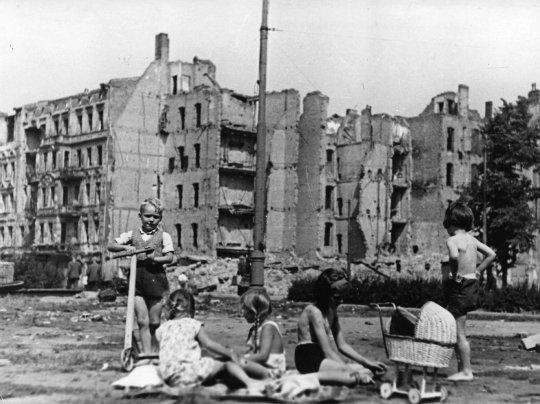
Children in bombed out Berlin in 1945. | Photo Otto Donath via Berliner Ferlag
The following five buildings represent Forgotten Masterpieces of German postwar architecture that deserve a closer examination.
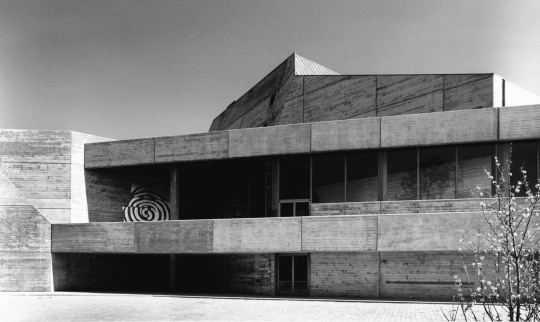
The theater captured shortly after its completion in 1966 by Sigrid Neubert. | Photo via Baunetz
The first building is the Municipal Theater in Ingolstadt by Hardt-Waltherr Hämer and his wife Marie-Brigitte Hämer. Hämer is best known for his Berlin works, where he eloquently proposed a cautious renewal of the city and its quarters.
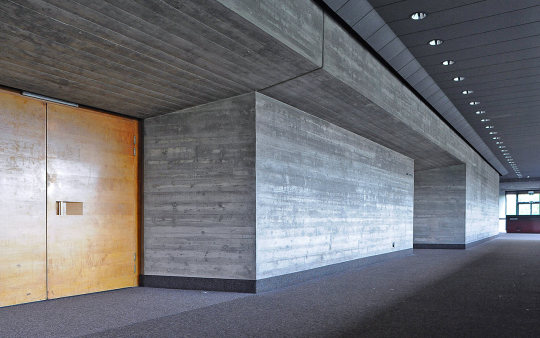
Interior view of the theater around 2009. | Photo via Breitschaft Architekten
The theater, designed and built between 1960 and 1966, is undoubtedly a prime example of German Brutalism that takes a bold modern stand within the city center of Ingolstadt: with its board-marked concrete surfaces and complex, interlocking interiors makes for interesting spatial experiences that are faintly reminiscent of Hans Scharoun‘s Berlin Philharmony.
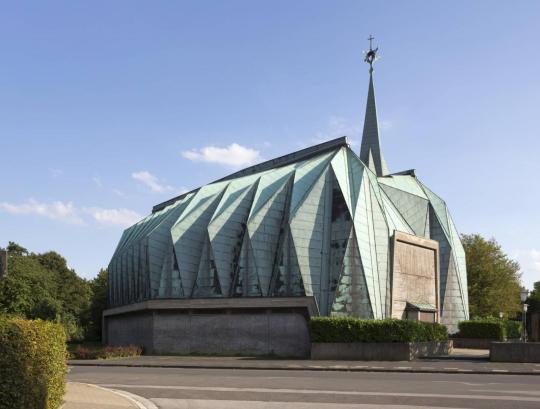
View of the church from Northwest. | Photo by © Florian Monheim
As the followers of my Tumblr might have recognized I have a major knack for postwar church architecture in Germany and beyond. One of the most interesting examples of postwar modern church architecture in Germany is St. Paulus in Neuss in the lower Rhine region, a congenial collaboration between architects Fritz and Christian Schaller and engineer Stefan Poloyni.

View from East into the nave. | Photo by © Florian Monheim
On a hexagonal plan they created an awe-awaking space that is crowned by a spherical, folded and diamond-shaped vault. The church quintessentially represents the inventiveness of architects faced with the task of designing contemporary religious architecture: a spectacular, technologically innovative space that relies on the interplay of light and shadow to create a contemplative yet solemn atmosphere.
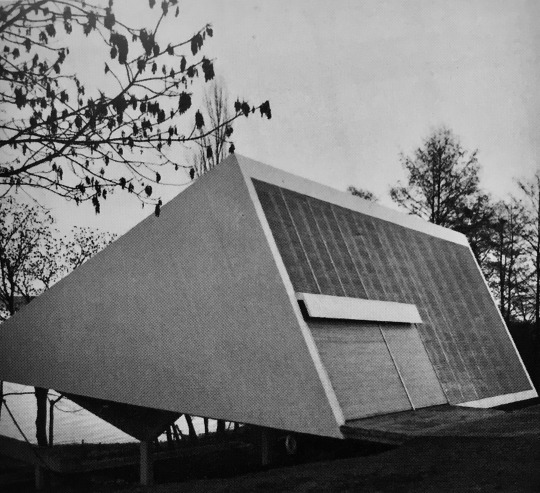
Moroshito after completion in 1961. | Photo via SAII
The summer house Moroshito, which Paul Stohrer designed for himself at Lake Constance, is a very unusual example of German postwar modernism and as such a favorite of mine. In its wedge-shaped design Stohrer processed influences from Oscar Niemeyer, a reference rarely present in German postwar architecture, and also gave expression to his colorful personality, which not only included a life-long passion for painting, but also for flamboyant sports cars.

The house's little bridge leading to the waters of Lake Constance. | Photo via Ruppenstein
Free from a client’s restriction Stohrer realized a house that was tailor made to his needs and gave him the freedom to play with shapes, materials and plans.
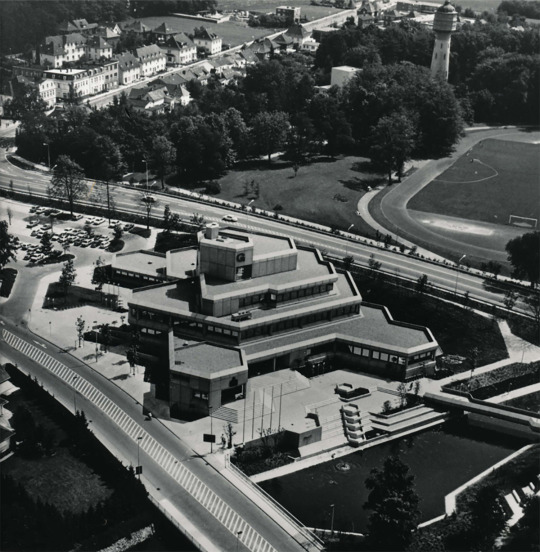
Aerial view of the town hall in 1975. | Photo via Baunetz
Harald Deilmann’s design for the Town Hall Gronau, a city on the German-Dutch border, represents a multi-functional approach to town halls in Germany in the 1960s and 1970s.
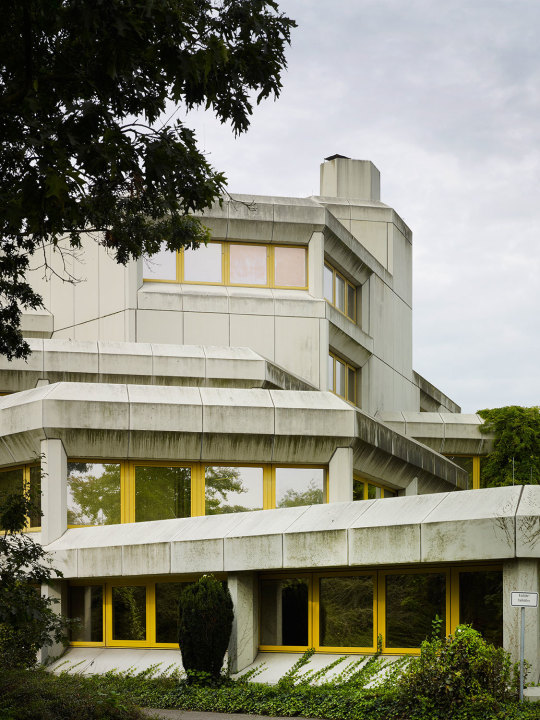
The town hall in 2016. | Photo by © Christian Richters
The scaled design houses a multitude of rooms, office, meeting places and with its raw concrete facade gives expression to the increased artistic freedom architects sought in these years. The building ranks among the most interesting yet overlooked examples of brutalism town hall architecture in Germany after WWII.
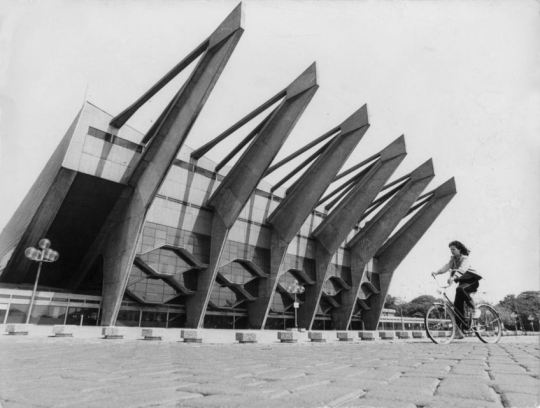
The Stadthalle in c. 1964. | Photo via Wesser Kurier
Last example of the architectural self-confidence of cities in postwar Germany is the Stadthalle in Bremen by Roland Rainer, built between 1961 and 1964. Rainer’s idea was to form a structural unity of a roof and stands, an idea that resulted in a suspension roof spanning more than 100 meters.

The Stadthalle was in 2000 renamed to AWD Arena. | Photo via Ortsamtwest
Due to the resulting expressive construction the Stadthalle soon became one of the city’s landmarks and together with the Stadthalle in Vienna and the one in Ludwigshafen forms a trilogy of Rainer’s successful civil engineering works.
--
#FOMA 23: Phillip Ost

Phillip Ost studies art history at Westfälische Wilhelms-Universität Münster, a middle-sized town in the Northwest of Germany. He focuses on postwar art and architecture in Germany and beyond with a special emphasis on postwar church architecture and German Art Informel. In 2014 he established German Post-War Modern, initially intended to serve as his personal visual archive of largely forgotten modernist architecture in Germany.
245 notes
·
View notes
Photo
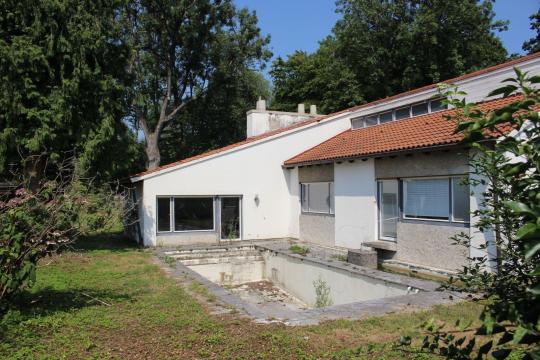
House Hielscher (1954) in Munich, Germany, by Paul Stohrer. Demolished.
#1950s#house#architecture#germany#nachkriegsmoderne#nachkriegsarchitektur#architektur#munich#paul stohrer#demolished
104 notes
·
View notes
Photo
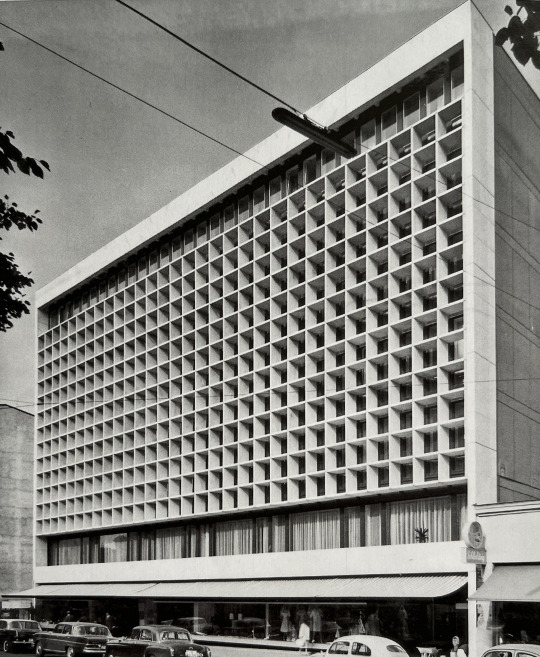
Office Building of “Iduna Versicherung” (1962-63) in Munich, Germany, by Paul Stohrer
#1960s#office building#concrete#architecture#germany#nachkriegsmoderne#nachkriegsarchitektur#architektur#munich#paul stohrer
258 notes
·
View notes
Photo

Coca-Cola Factory (1957-58) in Fellbach, Germany, by Paul Stohrer
#1950s#factory#concrete#architecture#germany#nachkriegsmoderne#nachkriegsarchitektur#architektur#paul stohrer
275 notes
·
View notes
Photo

Autobahnraststätte (1964) in Bühl, Germany, by Paul Stohrer
185 notes
·
View notes